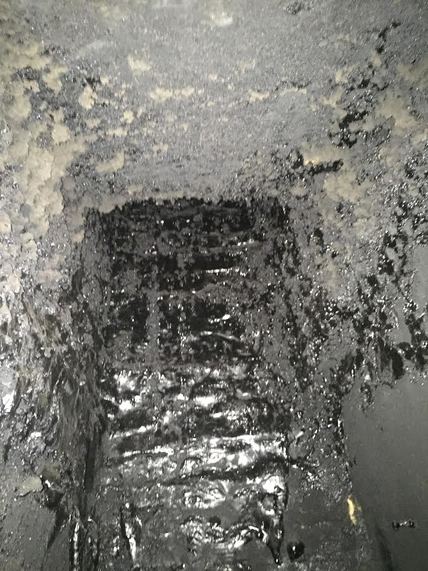|
Creosote is a highly flammable tar-like substance that can easily start a chimney fire if it is not removed! |
CreosoteCreosote and soot build-up in your chimney can be a fire hazard if your flue is not properly cleaned and maintained.
Creosote is a natural by-product of burning wood and its associated products; it can be defined as a combustible deposit which originates from condensed wood smoke. It includes tar vapours and other organic compounds. Tar droplets make up a major component of the smoke from smouldering wood. These compounds are always present when the combustion process of wood is incomplete. There are three stages or degrees of creosote. Stage 1 creosote is a fine black powder or dust. Stage 2 creosote becomes a more rock-like formation. Stage 3 creosote is like tar. It is sticky and viscous before hardening and having a glaze-like appearance. It is a highly concentrated fuel which hardens and can form a thick layer. As such it can easily catch fire resulting in a potentially devastating chimney fire. All three stages of creosote are combustible, but the longer you wait to have it cleaned, the greater your chance of a chimney fire. Third degree creosote cannot be removed by conventional sweeping using a brush. It must be chemically treated. Third degree creosote is usually the result of one or more of the following:
|





